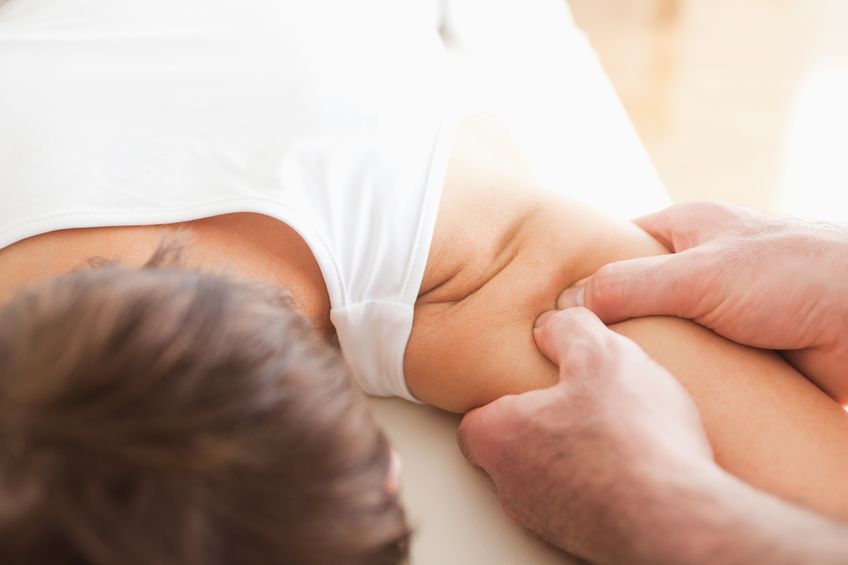The Restorative Benefits of Manual Therapy
by ACE Physical Therapy and Sports Medicine Institute
Tips for Manual Therapy.
- Physical Therapists are the best healthcare professionals at restoring function, and manual therapy can be a
major aspect of the treatment protocols. - Some manual therapy techniques create pain when they are performed.
- Not all Physical Therapy conditions require manual therapy techniques to get better.
- Physical Therapists are trained to assess the “end feel” and this determines how far they can/will/should
move your injured body part….it might hurt. - All manual techniques should be a part of the treatment protocol. Without a good exercise routine the results
might be temporary.
Physical Therapy utilizes a range of treatment protocols designed to help patients that have been impaired as a result of injury, surgery or disease. Therapy focuses on reducing pain while improving, developing and restoring compromised physical functions. Physical Therapists may choose Manual Therapy as part of an overall patient treatment program. Manual Therapy includes clinical techniques that utilize direct hand contact of the Physical Therapist with the patient.
While manual therapy does not have to be utilized on every patient, we cannot discount the “power” of human touch during the healing process. As part of the overall goal of diagnosing and treating patients, manual therapy can play a key role in helping increase mobility, reduce pain and swelling, and develop strength at the site of injury.
Improving Mobility and Motion
Mobilization and/or manipulation techniques are the most common types of manual therapy utilized in Physical Therapy. The differences between mobilization and manipulation are the speed and amplitude of the force applied. Mobilization techniques are applied at varying speeds and amplitude forces. Manipulation techniques are high speeds, low amplitude force in the form of a thrust applied to the joint within its anatomical limits. These techniques are specific passive movements of the soft tissue that enhance mobility and increase range of motion. Soft tissue is pliable, but many static stabilizing structures of a joint (e.g. ligaments and capsules) are similar to leather and must be stretched gradually to avoid damaging them.
Mobilization forces are distinguished by different grades. The Maitland Joint Mobilization scale is commonly used by Physical Therapist to describe their specific technique for a given treatment period. The five grades include:
Grade I: Small amplitude, rhythmic oscillations mildly stretching the capsule
Grade II: Larger amplitude rhythmic oscillations moderately stretching the capsule
Grade III: Large amplitude rhythmic oscillations when the movement in the capsule is initially limited
Grade IV: Small amplitude rhythmic oscillations at the end range of motion of the capsular fibers
Grade V: Small amplitude quick thrust at the end range of motion.
A Grade V mobilization can be considered a manipulation of the joint. Manual Physical Therapy groups often use the terminology of “thrust and not thrust” manipulation to differentiate the specific technique used to treat the patient during a treatment session.
In addition to the joint mobilization/manipulation techniques that are designed to enhance range of motion of the joint by stretching the capsule, the remaining soft tissue must be stretched to insure that the joint will regain the range of motion in its entirety. Stretching of the muscle (s) can be static or dynamic.
Static stretching is best performed when the muscle tissue is warm.
Dynamic stretching can be performed any time and has become the preferred form of preactivity stretching.
Manually stretching a muscle can include “contract/relax” and “contract/relax/contract” techniques. These are forms of stretching that engage the agonist and antagonist muscle groups and rely on the naturally occurring neurological inhibition of one of the muscle groups to enable it to be stretched to a further degree.
Controlling Pain
Manual therapy leverages a range of techniques that help reduce pain. Stretching tight structures, reducing swelling, and warming tissues can all play an effective role in pain reduction. Joint mobilization/manipulation can reduce pain by stretching tight structures and enhancing blood flow to the joint. Movement of the joints helps reducing swelling and thereby reduces pain. Massaging a sensitive area will “desensitize” the area over time.
When joint mobilization techniques are used there is an immediate analgesic effect thought to be the result of actions associated with nociceptors within the joint structure. If the thrust manipulation is performed, the joint is taken beyond
its physiologic limits and through the anatomic limits. This is thought to stimulate inhibitory signals and cause the surrounding musculature to relax eliciting a reduction in pain.
Manual therapy includes various forms of soft tissue mobilization. Soft tissue mobilization can increase blood flow, decrease pain, reduce swelling and help to restore function within a joint. An increase in blood flow helps to stimulate healing of injured tissue while reducing spasm of tight muscles and decrease swelling. The constant rhythmic motion or deep powerful stroking associated with various forms of soft tissue mobilization can increase tissue temperature and enhance a release of endorphins. These techniques stimulate large diameter superficial sensory nerve fibers and this will aide in the reduction of pain. The reduced pain and increased tissue temperature increases motion within the joint.
Strengthening Injured Areas
Physical Therapists assess the loss of strength due to injuries on a daily basis. Part of returning to a preinjury state involves restoring strength at the site of injury. Manual therapy offers a range of techniques that can be applied to improve strength. One popular technique involves applying manual resistance to the injured body part. The Therapist may use this technique throughout the range of motion to determine strength levels as well as quality and neurological control of motion. The ability to generate force throughout the entire range of motion can be greatly reduced when a joint is injured.
Since strength returns to the injured area in varying amounts and is dependent upon particular ranges of motion, it is important to strengthen the specific area throughout the entire range of motion for full function to return to the joint. The different length tension relationships that develop within the muscle’s Actin and Myosin as the body part moves must be addressed for a full strength return. These relationships are naturally controlled neurologically and reflexively by the “Muscle Spindle,” but an injury can “short circuit” the system.
By manually resisting motions and applying varying amounts of pressure, the Therapist reeducates the neuromuscular connections within the injured body part. This enhances the strength and normalizes the motions of the injury site. This is one of several techniques that a Physical Therapist will use to stimulate a muscle that is not responding well or having a difficult time generating force in a particular range of motion.
Manual Therapy is a beneficial form of therapy and can achieve many productive results. It is does not have to be utilized during every treatment session on every patient, but many conditions that are addressed by a Physical Therapist on a daily basis can benefit from manual techniques. The hands of a Physical Therapist can be a powerful diagnostic and treatment tool!
Read more articles on our main website blog at: ACE-pt.org/blog
Vist our main website at: www.ACE-pt.org



